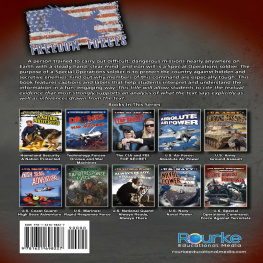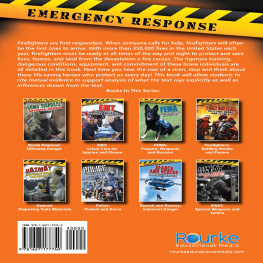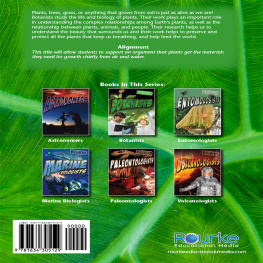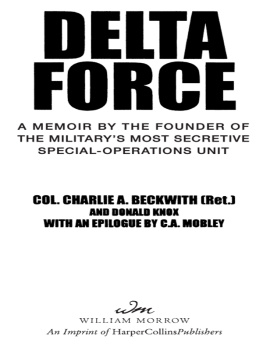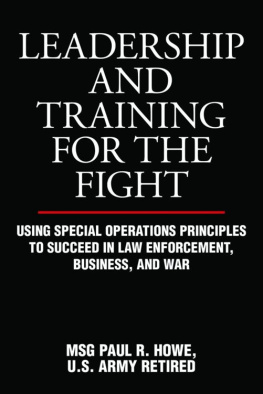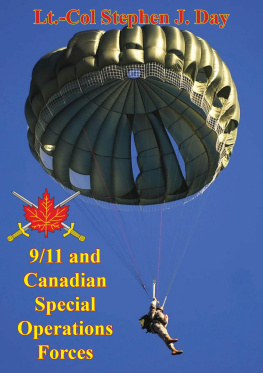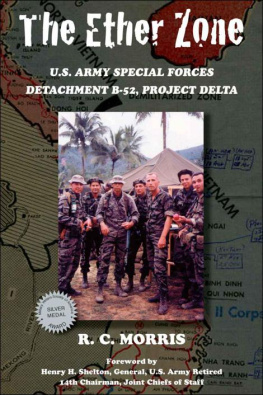Table of Contents
Guide
Level: U Word Count: 1,367 Words
100th Word: is
Content Area Vocabulary:
Read the list. What do these words mean?
base
command
force
resources
superiors
tactics
terrorist
threat
training
units
Building Background Knowledge
Before reading a book, it is important to tap into what your child or students already know about the topic. This will help them develop their vocabulary, increase their reading comprehension, and make connections across the curriculum.
| Look at the cover of the book.
What will this book be about? |
| What do you already know about the topic? |
| Lets study the Table of Contents.
What will you learn about in the books chapters? |
| What would you like to learn about this topic?
Do you think you might learn about it from this book? Why or why not? |
| Use a reading journal to write about your knowledge of this topic. Record what you already know about the topic and what you hope to learn about the topic. |
| Read the book. |
| In your reading journal, record what you learned about the topic and your response to the book. |
| Complete the activities at the end of the book. |

2014 Rourke Educational Media LLC
All rights reserved. No part of this book may be reproduced or utilized in any form or by any means, electronic or mechanical including photocopying, recording, or by any information storage and retrieval system without permission in writing from the publisher.
www.rourkeeducationalmedia.com
PHOTO CREDITS: Cover photo courtesy U.S. Marine Corps; back cover and title page: flag SFerdon; red background on pages Eky Studio Page 4 courtesy U.S. Army; Page 6 courtesy defenseimagery.mil; Page 7 courtesy U.S. Navy; Pages 8/9 courtesy U.S. Militaryphotos by Mass Communication Specialist 2nd Class Christopher Menzie, Mass Communication Specialist 2nd Class Shauntae Hinkle-Lymas, Pfc. Laura M. Bigenho, Tech. Sgt. Keith Brown; Page 10 courtesy National Archives and Records Administration; Page 11 courtesy Library and Archives Canada, map ildogesto; Page 12/13 courtesy U.S. Navy photo by Mass Communication Specialist 2nd Class Kyle D. Gahlau; Page 14 courtesy German Federal Archive; Page 16 Michael Foran; Page 17 courtesy U.S. Government; Page 18 courtesy U.S. Navy; Page 19 Robert F. Balazik; Page 20 courtesy U.S. Army photo by Petty Officer 2nd Class Katrina Beeler; Page 21 courtesy DVIDSHUB photo by Emmanuel Rios; Pages 22/23 courtesy U.S. Army, photos by Cpl. Peter R. Miller and Cpl. Christopher O'Quin; Page 24 Osama Bin Laden photo courtesy FBI, map pavalena; Page 25 courtesy U.S. Government; Page 26 Truthdowser; Page 27 courtesy U.S. Navy, photos by Gunnery Sergeant Shannon Arledge of the 2nd Marine Aircraft Wing; Page 29 courtesy U.S. Navy photo by Chief Mass Communication Specialist Kathryn Whittenberger
Edited by Precious McKenzie
Designed and Produced by Blue Door Publishing, FL
Library of Congress Cataloging-in-Publication Data
U.S. Special Operations Command: Force Against Terrorists / Tom Greve
p. cm. -- (Freedom Forces)
ISBN 978-1-62169-927-9 (hard cover) (alk. paper)
ISBN 978-1-62169-821-0 (soft cover)
ISBN 978-1-62717-030-7 (e-book)
Library of Congress Control Number: 2013938879
Rourke Educational Media
Printed in the United States of America,
North Mankato, Minnesota


rourkeeducationalmedia.com
PO Box 643328 Vero Beach, Florida 32964
TABLE OF CONTENTS
CHAPTER ONE
SPECIAL OPERATIONS COMMAND:
AMERICAS FIT FIGHTING FORCE
In the cold dark of a starless night, a U.S. soldier crouches silently behind a wall. His heart beats like a kick drum as he waits for word to move forward. His breathing and concentration are controlled and steady. He is poised, ready to receive an order and carry it out with deadly force.
This is no actor in some action movie. This is a Special Operations soldier. A person trained to carry out difficult, dangerous missions nearly anywhere on Earth with a steady hand, a clear mind, and an iron will. The purpose of a Special Operations soldier is to protect the country against hidden and secretive enemies.
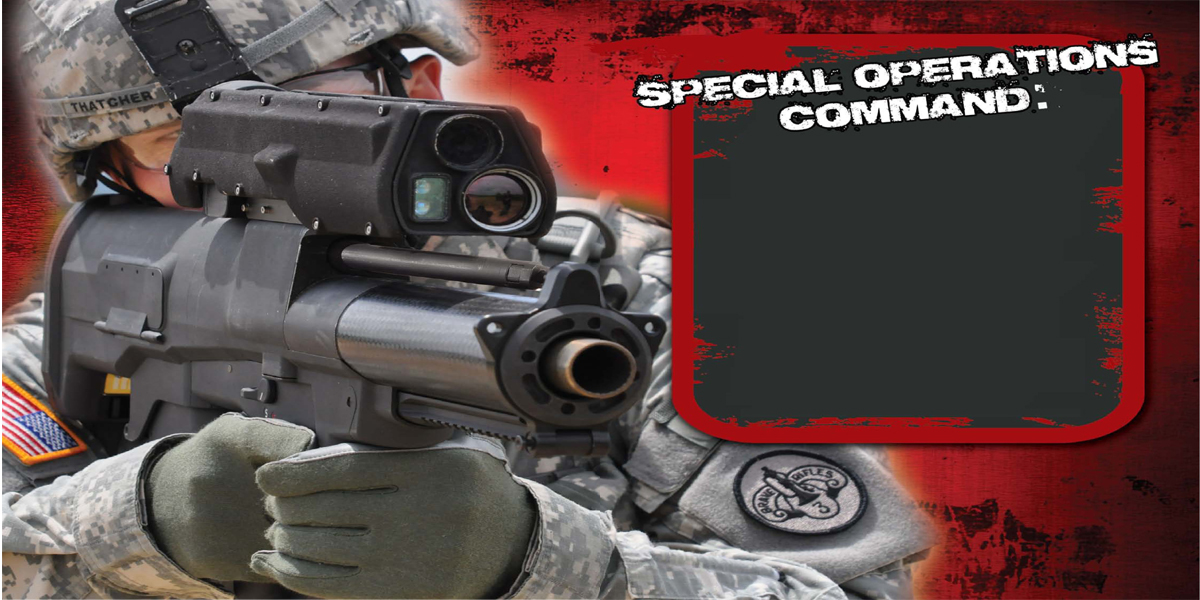
A soldier at Aberdeen Test Center aims an XM25 weapon system. This grenade launcher is capable of hitting targets behind cover or dug into the ground.
The United States has the worlds largest military force. The Army, Navy, Air Force, Marines, Coast Guard, and Central Intelligence Agency all play rolls in defending the country against forces that would aim to harm the nation, its people, and its resources.
But within the militarys ranks are groups of highly skilled and specially trained individuals. They are the best of the best, and they comprise the U.S. Special Operations Command, or SOCOM.
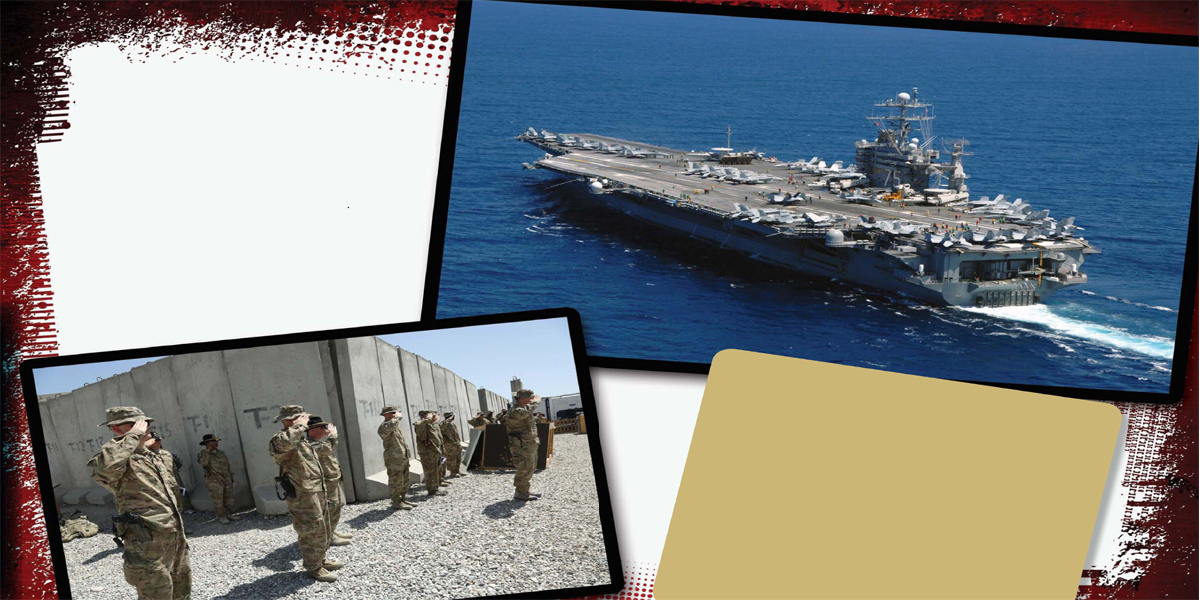
The sheer size of the U.S. defense force, its annual budget, and its wide-reaching capabilities to influence international relations are part of what makes the United States a superpower nation.
LIFE IN THE MILITARY
The U.S. military relies on a specific chain of command to streamline nearly everything it does. There is little tolerance for individual or selfish action. All members operate according to a code of conduct. This means soldiers follow orders from superiors without question. The military operates this way in peacetime as well as during times of war.
Members of Special Operations Command are especially tough. They have to be able to deal with fatigue, discomfort, and even pain, all while working in harsh conditions without losing focus on their mission.
But its not just physical toughness that qualifies a soldier for special operations duty. The persons strength has to be matched by smarts.

Soldiers applying for SOCOM units have to pass demanding physical tests to show strength, endurance, and a high level of physical fitness. These include swimming long distances in uniform, hiking with heavy loads at night, and distance running, all performed in a short amount of time.

